Strong solar activity from Sunspot 1302
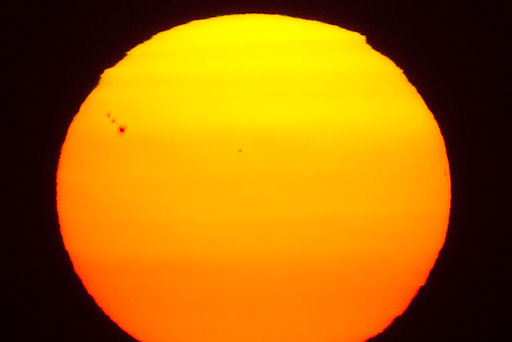
A pair of closely-spaced CMEs propelled by explosions of sunspot AR1302 on Sept. 24th are heading not-quite directly toward Earth. A significant glancing blow to our planet’s magnetic field is possible on Sept. 26th around 14:00 UT (+/- 7 hours). NOAA forecasters estimate a 30% chance of strong geomagnetic storms when the clouds arrive.
Having already unleashed two X-flares since Sept. 22nd, sunspot AR1302 appears ready for more. The active region has a complex “beta-gamma-delta” magnetic field that harbors energy for strong M- and X-classeruptions. Flares from AR1302 will become increasingly geoeffective as the sunspot turns toward Earth in the days ahead. (SpaceWeather)
Marko Posavec of Koprivnica, Croatia, photographed the behemoth sunspot between flares on Sept. 24th:
Solar wind
speed: 348.4 km/sec
density: 1.3 protons/cm3
The Radio Sun
10.7 cm flux: 190 sfu
Planetary K-index
Now: Kp= 1 quiet
Interplanetary Mag. Field
Btotal: 8.5 nT
Bz: 1.9 nT south
Latest Alert: Sep 25 1700 UTC ALERT: Type IV Radio Emission
Last Advisory Bulletin: None in last 7 days.
| Range 1 (minor) to 5 (extreme) | ||
| NOAA Scale | Past 24 hrs | Current |
| Geomagnetic Storms | ||
| Solar Radiation Storms | ||
| Radio Blackouts | ||
An aurora watch is in effect within the next 48 hours due to possible effects from a fast moving and partially earth directed Coronal Mass Ejection (CME) caused yesterday by a long duration M7.1 Solar Flare around Sunspot 1302. Minor to Major geomagnetic storming may be possible at high latitudes.
The Solar Flares just keep on coming. This time Sunspot 1302 churned out an M7.4 Solar Flare at 04:50 UTC Sunday morning. I created another presentation below showing the solar flare in progress as captured by the Solar X-Rays, EVE and SDO. Continue to monitor the Solar X-Rays for further activity on Sunday. (SolarHam)

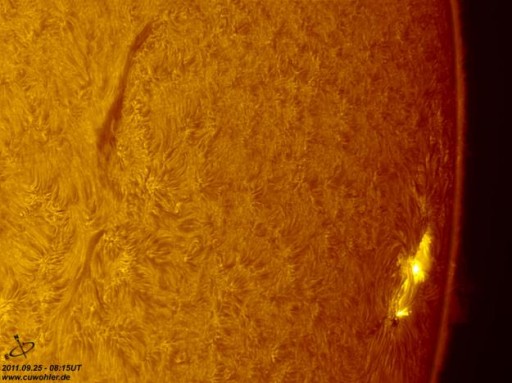

Active sunspot 1302 has turned the sun into a shortwave radio transmitter. Shock waves rippling from the sunspot’s exploding magnetic canopy excite plasma oscillations in the sun’s atmosphere. The result is bursts of static that may be heard in the loudspeakers of shortwave radios on Earth. Amateur radio astronomer Thomas Ashcraft recorded this sample from his backyard observatory in New Mexico on Sept. 24th:
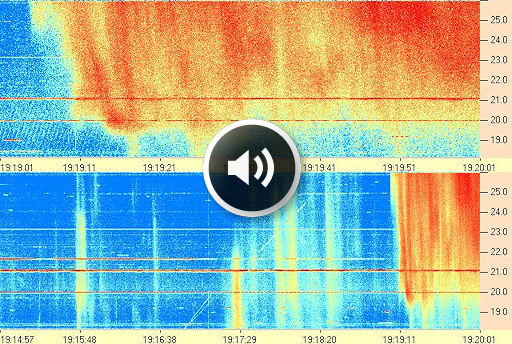

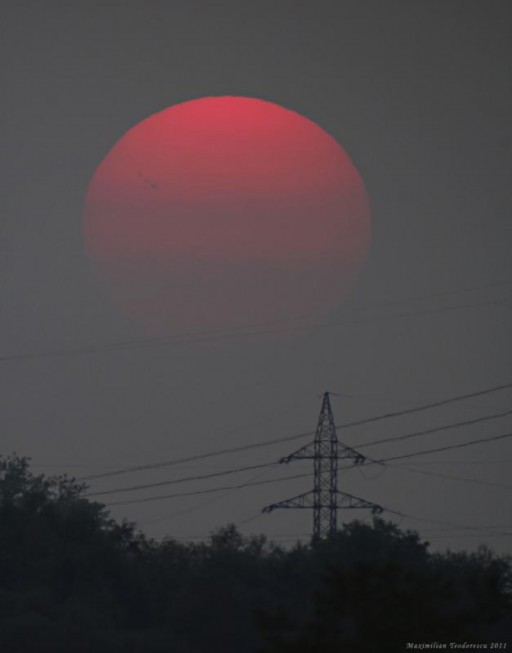


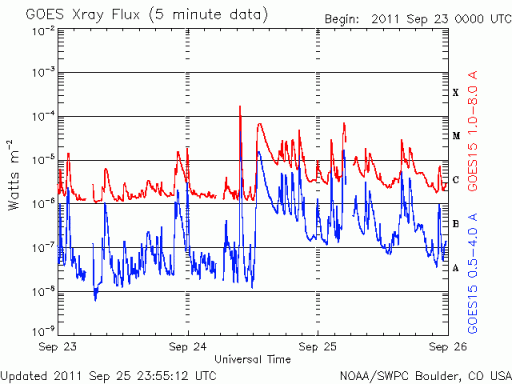
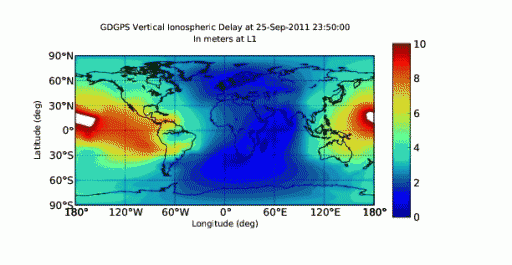
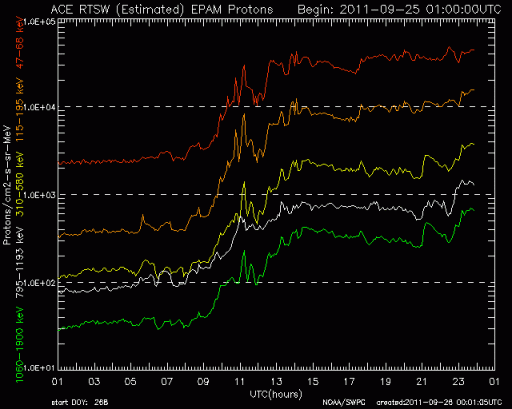
Commenting rules and guidelines
We value the thoughts and opinions of our readers and welcome healthy discussions on our website. In order to maintain a respectful and positive community, we ask that all commenters follow these rules:
We reserve the right to remove any comments that violate these rules. By commenting on our website, you agree to abide by these guidelines. Thank you for helping to create a positive and welcoming environment for all.